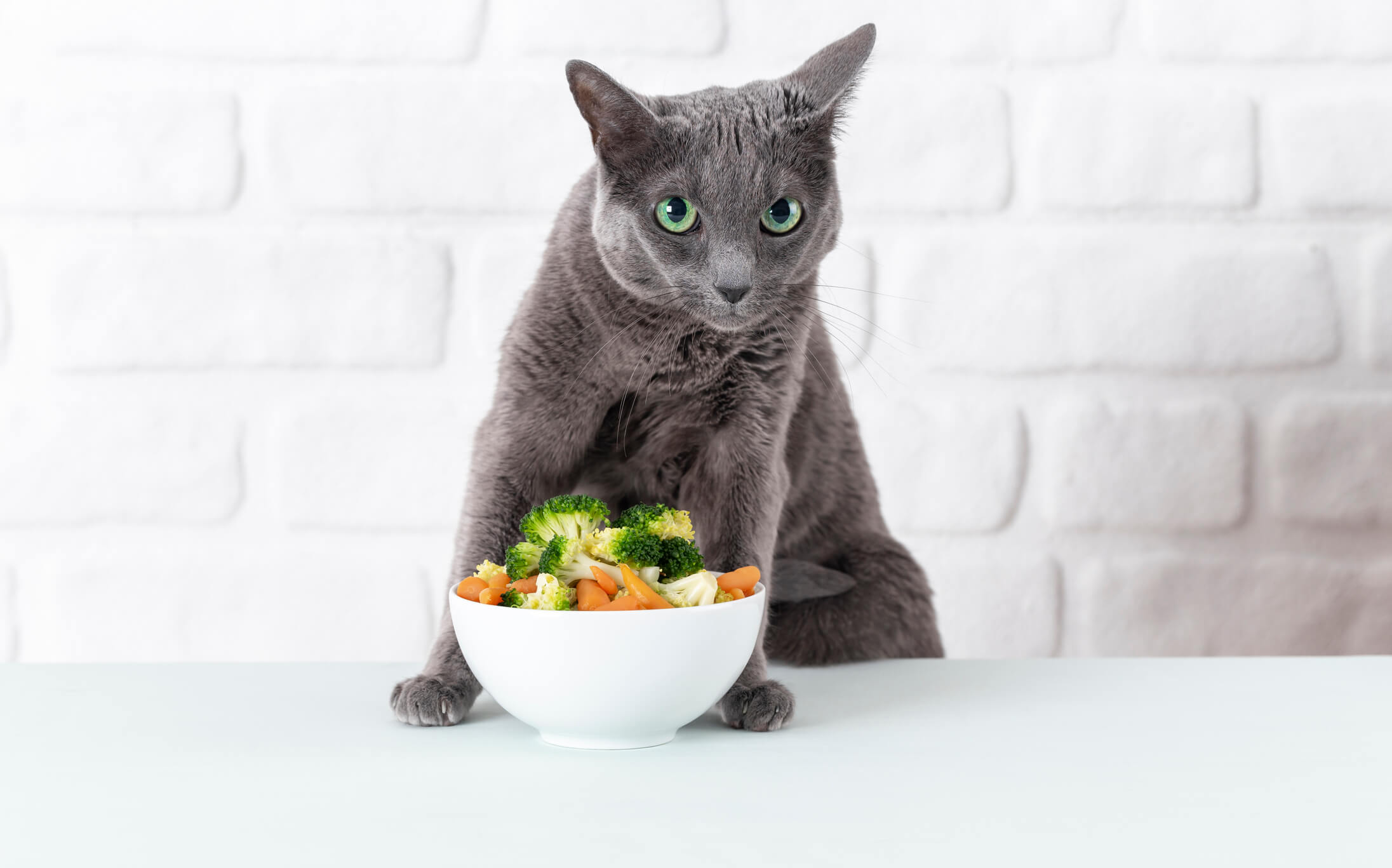
Why Carnivore Cats Still Need Greens
It’s no secret that cats love to eat meat. They’re carnivores by nature, with pointy teeth designed to tear into unsuspecting prey. Domesticated cats have retained the meat-eating tendencies of their ancestors, leading pet parents to believe all these fur babies want is a heaping pile of protein-rich wet food.
Despite their status as carnivores, though, cats can safely eat a range of leafy vegetables. When given in moderation, vegetables promote your cat’s health in many ways through vitamins, minerals, fiber and antioxidants. Here’s why you should consider adding greens to your kitty’s diet.
Nutrients you won’t find in meat
A common misconception is that cats should only consume meat. However, the term “carnivore” doesn’t mean that cats need to exclusively eat other animals. Cats are more accurately called obligate carnivores, which means they need meat to survive but can enjoy plant-based sustenance, as well. Not only are greens safe for cats, they provide a host of benefits kitties can’t get from animal products.
While protein is a cat’s main energy source, your feline friend needs a diverse range of vitamins, minerals and antioxidants to maintain a well-balanced diet. Phytonutrients, or nutrients found only in plants, can optimize your cat’s health in every part of the body. Plus, vegetables provide extra fiber that’s necessary for regular bowel movements and a healthy digestive system.
Vegetables are a healthy alternative that can replace commercial treats. Cats shouldn’t eat a solely plant-based diet, but vegetables make a great snack when you want to reduce their processed food intake. They’re especially beneficial for cats that need to lose weight due to their low-calorie contents. If you’re going to give Fluffy a treat, it might as well be a green bean!

Healthy veggies for your feline friend
Cats can eat vegetables, but you need to give them the right kinds. Some human foods are toxic to cats, so pay close attention to what’s going in their food bowl. The following are the best vegetables for cats along with their benefits.
- Broccoli: Broccoli contains nutrients that are highly beneficial to kitties. The green veggie is loaded with antioxidants, which can fight free radicals and reduce oxidative stress. Antioxidants can guard against chronic diseases because they protect cells from damage and mutation. The roughage in broccoli adds bulk to your kitty’s stool, making it a good remedy for digestive upset.
- Carrots: Carrots are a colorful addition to your cat’s diet. Their vibrant orange hue indicates carrots are a great source of vitamin A, which is essential for development, eye health and vital organs. Carrots also contain a compound called beta-carotene that the body can convert into more vitamin A.
- Green beans: This low-calorie veggie is a great choice for cats struggling with obesity. The fiber helps kitties pass bowel movements more efficiently, and a regular digestive system is crucial for helping cats lose weight. Plus, the long stalks give your kitty something to munch on other than your house plants!
- Spinach: Spinach is praised for its long list of vitamins and minerals, including vitamin C, vitamin K, iron and magnesium. A tiny portion of spinach can provide cats with many phytonutrients missing from an all-meat diet. Spinach also possesses anti-inflammatory properties that can calm an overactive immune system.
How to prepare vegetables for cats
Cats can reap the most benefits from vegetables when they’re enjoyed the right way. Root and cruciferous vegetables should always be steamed first because their raw forms are hard to chew. You can also boil vegetables, but steaming will preserve their color, aroma and nutrients. Whether you choose to boil or steam vegetables, the important thing is that they’re soft enough for your cat’s teeth.
Make sure all the vegetables are chopped into tiny bite-sized pieces. Vegetable chunks that are too big may pose a choking hazard, especially if you’re serving carrots or sweet potatoes. Alternatively, you can turn vegetables into a puree to make chewing a lot easier. Purees are also more digestible than chunks because the puree process breaks down cellular walls in the vegetables. This makes it easier for nutrients to pass from the gastrointestinal tract into the bloodstream.
Your carnivorous kitty doesn’t have to rely solely on meat. In fact, cats require a lot more nutrients than protein. Cats have much to gain from eating vegetables, whether it’s reduced inflammation or regular bowel movements. If your cat enjoys the taste of leafy greens, go ahead and let them have a nibble!


